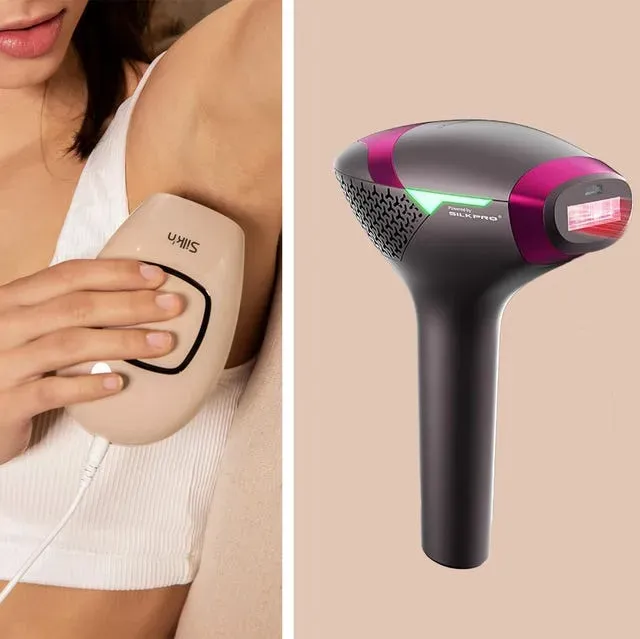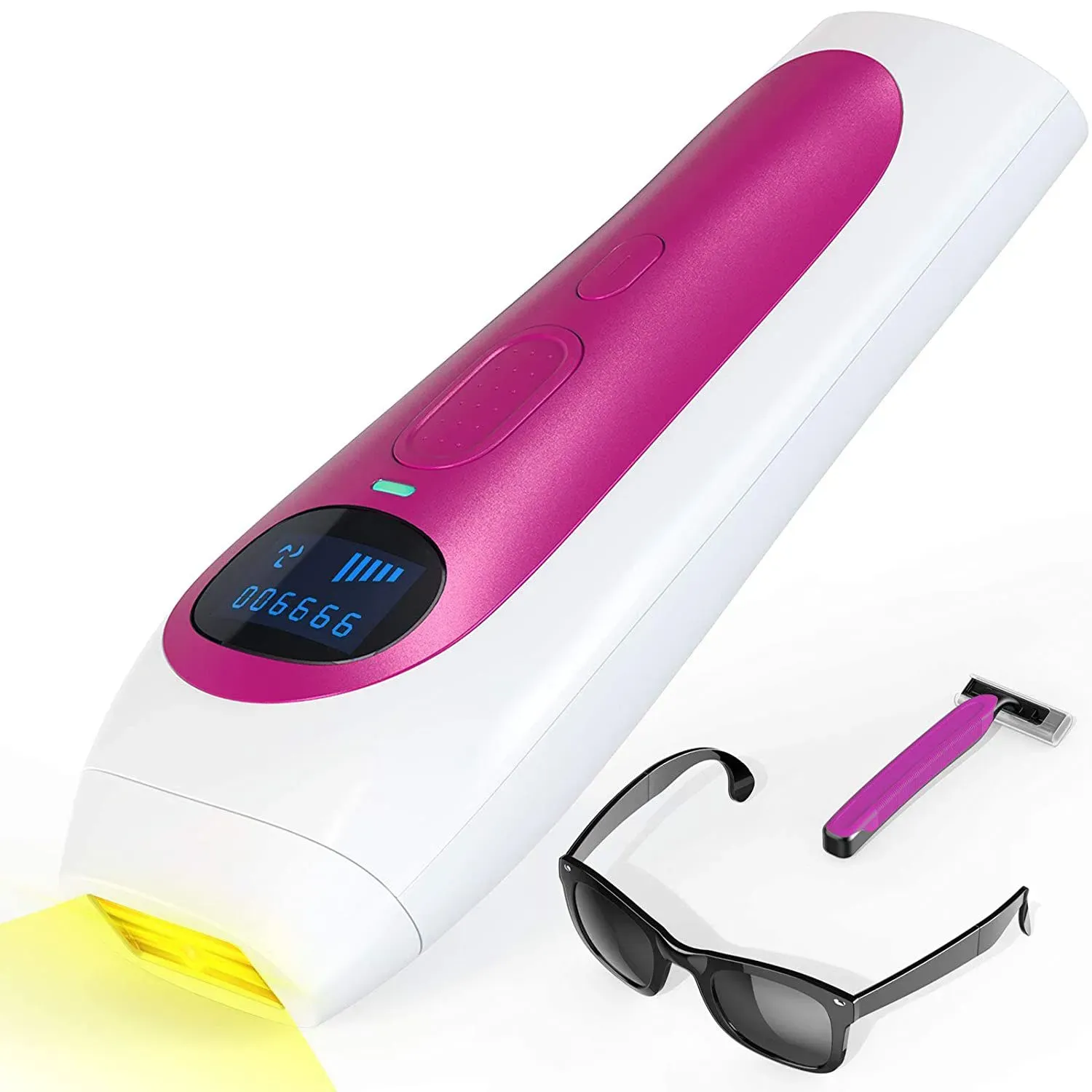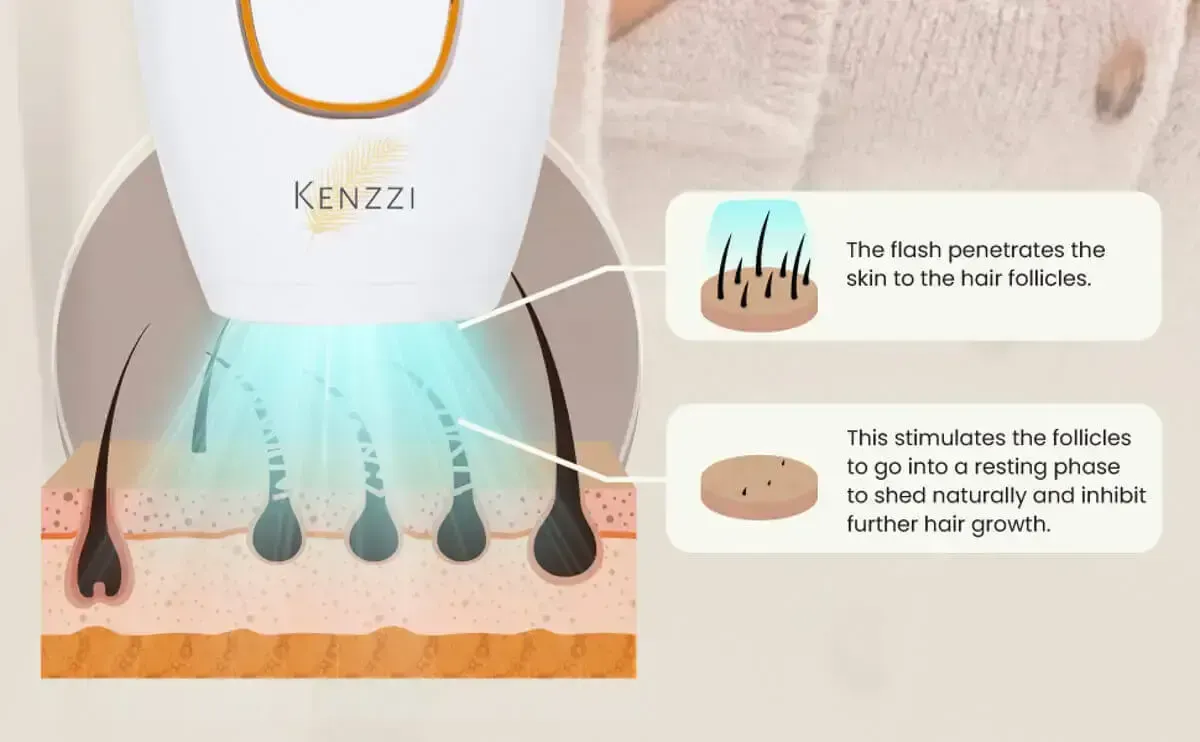Table of Contents
Let's be honest, the endless cycle of shaving, waxing, or enduring pricey salon trips for hair removal gets old. Fast. You spend time, money, and frankly, deal with discomfort, only for the stubble to reappear seemingly overnight. It's enough to make anyone eye those sleek, handheld devices promising permanent smoothness from the comfort of your bathroom.
Understanding the Tech: Laser vs. IPL for AtHome Hair Removal

Understanding the Tech: Laser vs. IPL for AtHome Hair Removal
Laser: The Targeted Approach
so you're looking at these devices, right? The first big fork in the road is understanding the difference between true laser and IPL. Think of laser like a sniper. It uses a single, concentrated wavelength of light. This light specifically targets the melanin (pigment) in the hair follicle. When the melanin absorbs this intense light, it heats up and damages the follicle, ideally preventing future hair growth. This precision means it's often more effective for people with darker hair and lighter skin, as there's a clear contrast for the laser to target.
It's a focused attack, designed to hit that bullseye of hair pigment. Devices using this tech often have a smaller treatment window because they're so precise. You'll see terms like Diode or Alexandrite lasers, though at-home versions are generally less powerful than salon machines. The goal is still the same: zap the follicle into submission.
IPL: The Broader Spectrum
Now, IPL stands for Intense Pulsed Light. If laser is a sniper, IPL is more like a shotgun. It uses a broad spectrum of light wavelengths, kind of like a camera flash. This light is absorbed by melanin in the hair, just like laser, but it's less focused. Because it uses multiple wavelengths, it can affect surrounding tissue as well, though devices have filters to minimize this.
This broader approach can make IPL more versatile for different hair and skin tone combinations, though it might require more sessions than a true laser device to see significant results. It's generally considered gentler than laser, which is why many at-home devices use this technology. You'll often cover larger areas faster with an IPL device due to its wider treatment window.
- Laser: Single wavelength, highly targeted, often stronger.
- IPL: Broad spectrum of wavelengths, less targeted, generally gentler.
- Both target melanin in the hair follicle.
- Effectiveness depends on hair color and skin tone.
Why the Difference Matters for At-Home Use
Understanding whether a device uses laser or IPL is crucial when you're trying to figure out what is the best at home laser hair removal for *you*. It's not just tech jargon; it directly impacts who the device will work for and what kind of results you can expect. For instance, if you have very light blonde, red, or gray hair, neither laser nor IPL is likely to be very effective because there isn't enough melanin for the light to target. Darker skin tones also require devices specifically designed to safely deliver energy without damaging the skin, as darker skin has more melanin that can absorb the light.
Manufacturers are getting better at making devices that are safer for a wider range of skin tones, but it's still the most critical factor to check before you even think about plugging one in. Don't just grab the first shiny gadget you see; do your homework on the technology and its compatibility with your specific hair and skin type.
What is the Best At Home Laser Hair Removal For Your Needs?

What is the Best At Home Laser Hair Removal For Your Needs?
Alright, so you've got the basics down on laser versus IPL. Now comes the real question: given all that, what is the best at home laser hair removal device *for your needs*? This isn't a simple "buy X brand" situation, because what works wonders for your friend with dark hair and fair skin might be completely ineffective, or even unsafe, for you. Finding your "best" device requires a bit of self-assessment first. You need to look honestly at your hair color (is it dark brown or black?), your skin tone (check that Fitzpatrick scale if you're unsure – devices usually list compatible types), the areas you want to treat (legs? face? bikini line?), and, let's be real, your budget. Ignoring these factors is the fastest way to end up with an expensive gadget gathering dust in a drawer.
Reviewing the Top Picks: Finding What is the Best At Home Laser Hair Removal Device

Reviewing the Top Picks: Finding What is the Best At Home Laser Hair Removal Device
so you've sized up your hair and skin, figured out if laser or IPL is the likely path, and now you're staring at a sea of products online. This is where things get tricky. Everyone claims their device is "the best," promising miracles after just a few uses. It's enough to make your head spin. Finding what is the best at home laser hair removal device means sifting through marketing hype and digging into what users actually experience and what the underlying tech can realistically do. It’s not about chasing the cheapest or the one with the most flashy lights; it's about finding a device that's proven, safe for your specific profile, and delivers consistent energy to actually impact those follicles over time. We've looked at devices that consistently pop up in reviews, have decent safety features, and use technology appropriate for home use, keeping in mind that "best" is highly personal here.
Getting Serious Results with What is the Best At Home Laser Hair Removal

Getting Serious Results with What is the Best At Home Laser Hair Removal
Prep Work Isn't Optional, It's Everything
Look, you bought what you hope is the best at home laser hair removal device, but it's not a magic wand you just wave around. Getting those serious results requires some effort before you even turn the thing on. The absolute golden rule? Shave the area just before treatment. Why? Because the device needs to target the pigment in the hair follicle *under* the skin, not the hair sitting on top. Long hair on the surface will just absorb the energy, potentially causing discomfort or burns, and less energy gets down to the follicle where it matters. Clean skin is also key – no lotions, no oils, no leftover deodorant. Think of it like clearing the path for the light energy to do its job efficiently. Skip the exfoliation right before, though; you don't want to irritate your skin before hitting it with light pulses.
Consistency Trumps Everything Else
This is where many people drop off. You do a session or two, don't see dramatic results instantly, and the device ends up in a cupboard. That's the wrong approach. Hair grows in cycles, and these devices are most effective on hair in the active growth phase. Since not all hairs are in this phase at the same time, you need multiple sessions spaced out over several weeks or months to catch them all. Most manufacturers recommend treating every 1-2 weeks for the initial phase, typically for 4-12 weeks. After that, you switch to maintenance, maybe once a month or as needed. It feels like a commitment because it is. Anyone promising permanent hair removal after one zap is selling you snake oil. Patience and sticking to the schedule is non-negotiable if you want to see significant reduction.
- Shave the area immediately before treatment.
- Ensure skin is clean and dry.
- Follow the recommended treatment schedule (usually weekly or bi-weekly initially).
- Treating different body areas might require different frequencies.
- Don't expect instant, complete hair removal.
Managing Expectations and Technique
Even with the best at home laser hair removal device, results vary wildly from person to person. Your hair thickness, color, skin tone, and even hormones play a role. Some areas might clear up faster than others. The upper lip might be stubborn, while legs see quicker progress. Pay attention to your skin's reaction. A little redness is normal, but pain, blistering, or prolonged irritation means you need to back off, lower the intensity, or maybe the device isn't right for you. Overlapping pulses is a common mistake – you only need to treat each area once per session. Think of it like mowing the lawn; you want clean strips, not a tangled mess. Some devices, like those you might find reviewed on hairawaybylaser.com, have safety features like skin tone sensors to help prevent misuse, which is a smart feature to look for.
Safety First: What to Know Before You Zap

Safety First: What to Know Before You Zap
Know Your Skin and Hair Type Compatibility
let's talk safety because zapping yourself without understanding the risks is just asking for trouble. The absolute number one rule is knowing if the device is even *meant* for your skin tone and hair color. This isn't a suggestion; it's a non-negotiable requirement. These devices work by targeting pigment. If your skin has too much pigment relative to your hair, the light can get absorbed by your skin instead of the follicle. This can lead to burns, blistering, hyperpigmentation (dark spots), or hypopigmentation (light spots). Manufacturers always provide a skin tone chart – usually based on the Fitzpatrick scale – and tell you which hair colors the device is effective on. If you have dark skin (say, Fitzpatrick IV or higher) or very light hair (blonde, red, gray), most at-home devices are not safe or won't work. Period. Don't try to make it work. Using a device incompatible with your skin tone isn't just ineffective; it's genuinely risky.
Patch Testing and Avoiding Sensitive Areas
Before you go treating your entire leg or face, you *must* do a patch test. Pick a small, inconspicuous area with similar hair and skin to the area you plan to treat. Use the device on a low setting first, then maybe bump it up if your skin tolerates it. Wait 24-48 hours. If you see excessive redness, swelling, blistering, or significant pain, this device or setting isn't for you. Don't push through it. Also, there are areas you should absolutely avoid: nipples, genitals, moles, tattoos, freckles, or areas with varicose veins or active acne. Tattoos and moles have high pigment and can get burned. Skin conditions can be aggravated. Stick to the recommended treatment areas only. It's better to be overly cautious than deal with lasting skin damage.
- Always perform a patch test before full treatment.
- Start with the lowest intensity setting.
- Wait 24-48 hours to check for adverse reactions.
- Avoid treating moles, tattoos, or areas with skin conditions.
- Do not treat nipples or genitals with most at-home devices.
Understanding Potential Side Effects and When to Stop
While these devices are designed for home use and are generally less powerful than professional machines, side effects can still happen. Mild redness, slight swelling around the follicle (sometimes called "perifollicular edema"), and a feeling of warmth are common and usually subside within a few hours. However, persistent pain, blistering, bruising, or changes in skin texture or color are red flags. If you experience any of these, stop using the device immediately. Consult the device's manual for troubleshooting or contact the manufacturer. If symptoms are severe or don't improve, see a dermatologist. Pushing through significant discomfort or visible skin reactions is foolish and can lead to permanent scarring or pigment changes. Your goal is smooth skin, not a dermatology bill and regret.
Making the Call: What is the Best At Home Laser Hair Removal For You?
So, after wading through the tech specs and user reviews, the answer to "what is the best at home laser hair removal" device isn't a single nameplate etched in stone. It's less about finding *the* best and more about finding the best *for you*. Your skin tone, hair color, budget, and frankly, how much patience you possess for regular sessions, all play a starring role in this decision. These devices aren't a magic wand for instant, permanent results, despite what some marketing might suggest. They require commitment and realistic expectations. Do your homework, consider your personal factors, and remember that consistency is the actual secret sauce.
